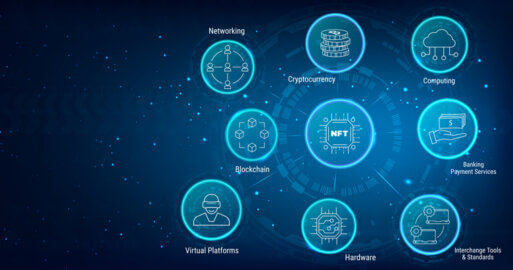Better Than Crypto – What’s the Deal With the Digital Euro?

+++ Update: The preparation phase of the digital Euro was approved to commence in November 2023. The outcomes derived from the research conducted during the investigation phase of the digital euro laid the basis for these next steps.
The primary objective of the preparation phase is to establish the groundwork for a potential digital euro issuance, which involves finalizing the digital euro rulebook and identifying potential providers capable of developing the digital euro platform and infrastructure. The process also includes testing and experimentation to create a digital euro that aligns with both the Eurosystem’s requirements and user preferences.
The ultimate decision on whether to issue a digital euro can only be contemplated in a later phase, subsequent to the adoption of the legislative framework for the digital euro at the European level.
+++
It’s no longer a secret: Digital currencies are not only socially accepted, but are becoming increasingly popular. Cryptocurrencies such as Bitcoin and Ethereum are already accepted means of payment in many stores, such as Microsoft, Ralph Lauren and Shopify, and entire nations such as El Salvador have already recognized them as official currencies. No wonder the discussion about digital central bank money in Europe is also becoming more concrete. Yes, the digital euro, also known as the “E-Euro,” is coming, says European Central Bank (ECB) President Christine Lagarde. The only question is, when will it come and make its way into our society? In this blog, we look at how the European answer to bitcoin works, its future prospects and the possibilities for integration.
What is the digital euro?
Around 43.5% of all payments in Germany are still made in cash, a meager 5% by smartphone, and card payments have been gaining in popularity since the pandemic at 51.5% (Cash, card or smartphone: Here’s how everyday life is at the checkout (geldinstitute.de)).

The digital payment options available today may look like the future of the digital euro, but they are fundamentally different in many respects.
- Online and offline real-time payments: Regardless of whether we pay contactless, with a card or with a cell phone – the conventional debit or transfer of money takes from a few hours to two days from order to execution. By comparison, when we pay with the digital euro in the future, we can also do so with a card or cell phone, because payment options should still be guaranteed online and offline. However, the amount to be paid will always be transferred to the recipient’s account in real time after the payment request.
- Anonymity: Whether the digital euro will or can become 100% anonymous depends heavily on technical and regulatory features implemented when it is introduced. Traditional digital payment systems such as credit cards or electronic transfers are usually not fully anonymous, as transaction data is usually stored and can be viewed by relevant authorities to combat fraud and prevent money laundering. It is likely that a digital euro would also have corresponding security measures and regulatory requirements. So far, complete anonymity is only possible with cash and cryptocurrency. No one can trace what the money was spent on after exchanging coins and bills or Bitcoin and Ethereum for goods or services, nor the sender and recipient. Also important to note is that the E-Euro will create a European payment processing layer that does not exist today, and we will become dependent on organizations outside the EU, which also raises concerns about data privacy.
The digital euro of the European Central Bank is a digital image of cash, i.e. digital central bank money (CBDC). This replica should primarily fulfill three conditions in order to equal the established cryptocurrencies: First, the E-Euro must be available online and offline, so it must also be anonymous, leaving no security gaps as described above, and third, payments should be made in real time. In addition, the ECB imposes conditions on its digital euro in terms of security, EU-wide usability and profitability for users (The digital euro and the importance of central bank money (europa.eu)). But what is the central bank’s own interest in this?
What are the goals of the digital euro?
The European Central Bank (ECB) is behind the digital euro, so it‘s not a profit-oriented corporation or a commercial bank but an institution of the European Union. The E-Euro is still in the investigation phase until October 2023 as the central bank examines how the digital money could look and be issued, as well as its possible effects on the market.
The primary objective of the ECB is price stability and value preservation of the EU currency. With the increasingly frequent emergence of cryptocurrrencies and their high popularity and acceptance in society, pursuing this objective is no longer easy for an institution like the ECB. Bitcoin and Co. are forcing their way into the financial market. However, they are not subject to the influence of banks or governments, because the crypto network regulates itself. Of course, this is viewed positively, but it’s also a big disadvantage from the perspective of central banks around the world, because they cannot influence the unpredictable increases and decreases in the value of cryptocurrency.
The digital euro should therefore be seen as a secure and stable further development of conventional cash with which the ECB would like to counteract the risky cryptocurrencies. After all, although slightly less than half of all Euro payments are still made in cash, the trend is toward cashless payments. In addition, in countries such as Norway, the Netherlands and Finland, it is possible to make exclusively cashless purchases. Sweden even wants to completely abolish its cash by 2030 (Cashless payments in 5 European countries – N26).
Not to be neglected is the aspect of money creation. Money creation refers to the process by which new money is introduced into an economy. Most of the money existing in the economy is not in the form of physical banknotes but as book money. This book money is created by commercial banks when they make loans. For example, when a commercial bank grants a loan to a customer, it credits the corresponding amount to the customer’s account as a credit balance. This credit balance is referred to as giro money and is part of the money supply in the economy. With the digital euro, money creation will move strongly to the ECB.
Other countries are either keeping pace with the EU or are already ahead of the EU. Digital money has sparked a heated economic race between major nations and their currencies. The People’s Bank of China and the U.S. are already working on digital versions of the yen and dollar with the long-term goal of replacing cash. The “winning currency” will then set the global standard simply by having first-mover advantage. As a result, it will not only be the new global reserve currency, but it will also play a key role in shaping Industry 4.0, because globally standardized interconnected systems and machines also need a standardized digital currency.
Integration of the e-euro
Since cash and digital money will initially exist in parallel in the eurozone, network participants, point-of-sale terminals and ATMs will all need to accept the new digital currency. Therefore, it‘s necessary to begin integrating the digital euro into existing payment systems. The integration of digital central bank money into existing banking and financial systems involves a number of important aspects:
- By upgrading the technological infrastructure, financial service providers can ensure that they optimally provide their customers with the necessary technologies to support CBDC transactions. This involves not only consolidating and upgrading payment networks and introducing and seamlessly integrating digital wallets into online banking platforms, but also providing and implementing digital protocols for the secure storage and transfer of digital currencies. This allows banks to establish connectivity to the CBDC infrastructure of the central bank.
- Securely introducing the digital euro into the established banking and financial system requires the development of a comprehensive regulatory framework. This defines the legal and operational requirements for the use of CBDCs in the eurozone and beyond. The regulations include important aspects such as data protection, anti-money laundering (AML) and know-your-customer (KYC) compliance, as well as consumer protection. These initiatives are critical to ensure the sustainable adoption of digital currencies in a transparent, lawful, and secure environment, and also thus to certainly counter any skepticism some consumers may have about CBDCs.
- In the age of globalization and international trade, which is also made increasingly easy by digitalization, international transactions are part of virtually every company’s daily business. If we leave out business within the eurozone for the moment, international business transactions always involve a transaction between different currencies. So, to enable seamless cross-border integration of CBDCs, it‘s critical to collaborate with other central banks and international organizations. This collaboration can promote interoperability and the cross-border use of CBDCs.
- The e-euro, just like any other digital currency, can only find its way into our everyday lives if it‘s accepted and used by the public. An essential component of gaining acceptance is to provide user-friendly interfaces. This includes developing intuitive and accessible applications and platforms that allow users to easily use and manage CBDCs. By creating a positive user experience, the acceptance of CBDCs is promoted and the inhibition threshold for their use is lowered.
In summary, (cyber) security, scalability, standardization and interoperability are paramount for integration of the e-euro, while reducing costs and complying with regulatory requirements.
How SEEBURGER helps
You guessed it. In order to meet all these public demands while still complying with legal and security guidelines and requirements, in addition to surviving in an extremely competitive environment, the established IT infrastructure must be modernized and legacy and new systems must be consolidated. SEEBURGER has extensive and long-standing experience in the integration and consolidation of technologies and systems, as well as in supporting financial service providers in the age of digitalization.
Through customized and industry-specific platform capabilities and consulting services for financial service providers, SEEBURGER can help financial institutions effectively and sustainably integrate CBDCs into existing infrastructures and support the success of digital currencies. We help you integrate and manage user-friendly interfaces so that your customers can also benefit from security, system stability and speed — you focus on your day-to-day business while we focus on your IT.
Technical Whitepaper
Learn more about Business Integration in our Technical Whitepaper on the SEEBURGER BIS Platform: SEEBURGER BIS | The modular integration platform for digitalization
DownloadThank you for your message
We appreciate your interest in SEEBURGER
Get in contact with us:
Please enter details about your project in the message section so we can direct your inquiry to the right consultant.
Written by: Sandrine Wagner
Sandrine joined our marketing team in August 2021 as an editor and campaign manager. She holds a Bachelor's degree in International Business and brings fundamental expertise in FSI and FinTech to our marketing team through her network engagements, previous internships and student jobs. After her internship at SEEBURGER, she joined our editorial team full-time and has since been involved in writing creative and technical content for our blog and other resources in German and English. Her campaign management work focuses on trends and innovations in various sectors, most notably the financial industry. In her free time, Sandrine enjoys exploring nature with her pets, learning foreign languages and reading literature.





